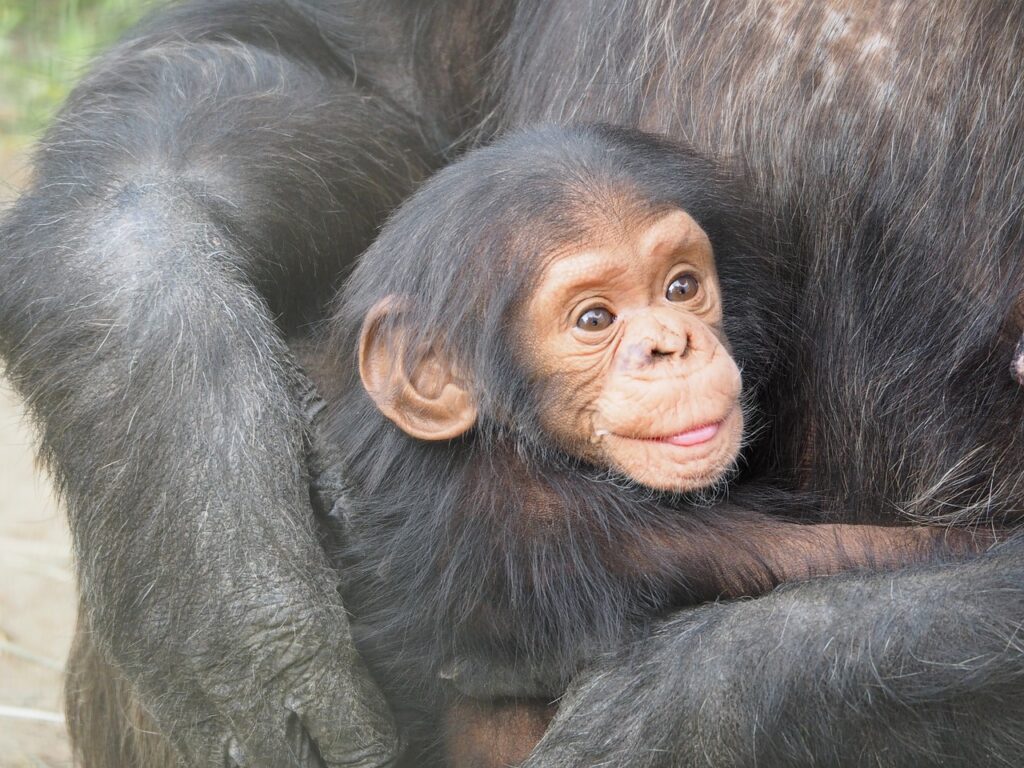If you’re curious about animals that can’t swim, here are some examples for you to ponder: Chimpanzees, with their DNA similarities to humans, struggle due to bulky bones; Tortoises, not built for water, float with air pockets in their shells; Hippos, despite spending hours in water, prefer walking on the bottom; Gorillas, cautious around water, find swimming a challenge with their heavy bodies; and Giraffes, with their long legs, avoid swimming due to their tree browsing adaptations. These fascinating creatures offer unique insights into their adaptations and why swimming isn’t their forte.
Chimpanzees
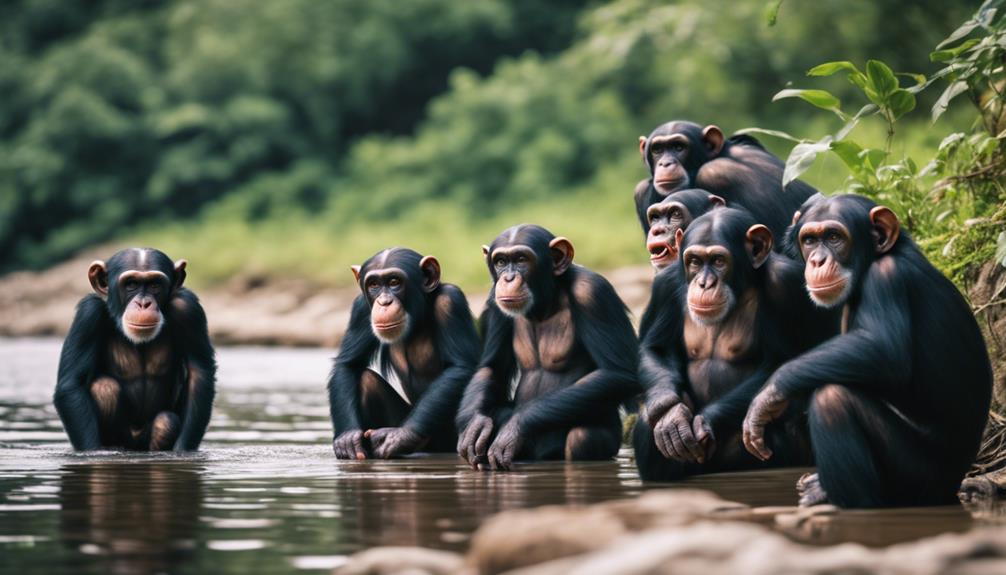
Chimpanzees, despite sharing DNA sequences with humans, face hindrances in swimming due to their bulky bones. Occasionally, they enjoy shallow water dips but are at risk of tragic outcomes in deep water. Their bodies, adapted for life in trees, aren’t well-suited for efficient swimming. When venturing into deep water, the weight of their bones causes them to sink, leading to dangerous situations. Unlike other animals that have evolved for aquatic life, chimpanzees rely more on their arboreal skills than swimming abilities.
Their playful nature near water may deceive observers about their swimming capabilities, but caution is essential in evaluating their comfort and safety in aquatic environments. Observing chimpanzees in the wild may provide insights into their behavior around water and help understand the limitations they face when exploring aquatic spaces. Despite their genetic similarities to humans, swimming remains a challenging and potentially perilous activity for these intelligent primates.
Tortoises

Tortoises, with their limbs designed for land rather than water, face challenges when it comes to swimming due to their heavy shells and lack of physical evolution for aquatic environments. Their shells, which can weigh up to 880 lbs, prevent safe swimming and make staying afloat difficult. While the majority of tortoises can float due to air pockets in their bodies, swimming isn’t a natural or efficient activity for them.
Unlike aquatic animals adapted for water movement, tortoises are better suited for life on land. Their slow and steady movements on solid ground showcase their evolutionary adaptations for traveling terrestrial landscapes. So, if you ever come across a tortoise near water, you’ll likely witness a creature more comfortable basking in the sun on the shore than gracefully gliding through the water like its aquatic counterparts.
Hippos
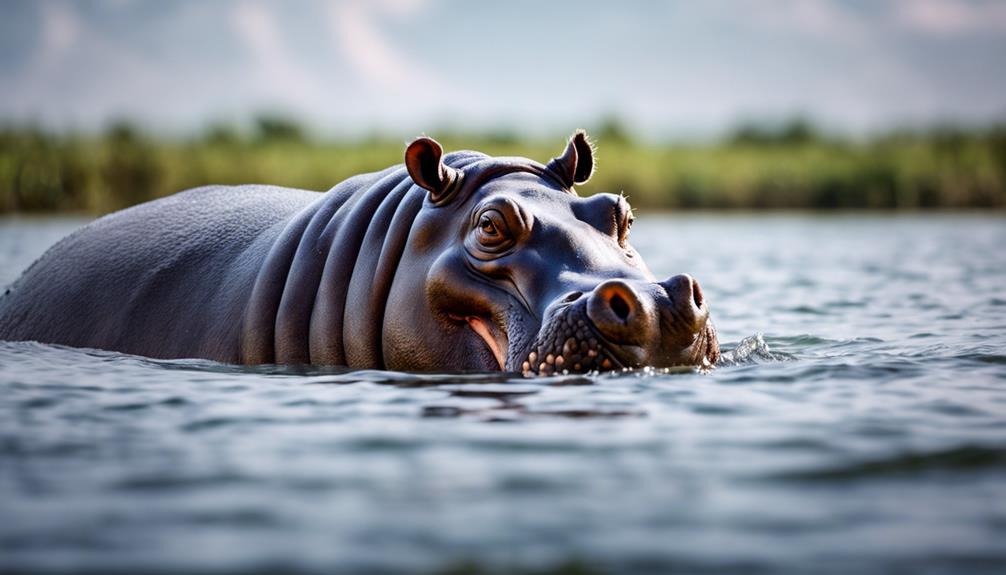
Spending 16 hours a day in water, hippos rely on aquatic environments for cooling off and protecting their sensitive skin. These hefty creatures, despite their size, aren’t strong swimmers. Their heavy bodies and dense bones make swimming a challenge.
Instead of swimming, hippos move by walking on the bottom of water bodies. They’re territorial in the water, often ignoring other animals on land. Hippos are known for their aggressive behavior when they feel threatened, especially in their watery territories.
Despite their lack of swimming prowess, hippos are well-adapted to their semi-aquatic lifestyle. Their dependence on water for various activities, including social interactions, mating, and cooling off, highlights the importance of aquatic environments in their lives.
Watching these massive mammals gracefully navigate through the water, despite their limitations, is a sight to behold.
Gorillas
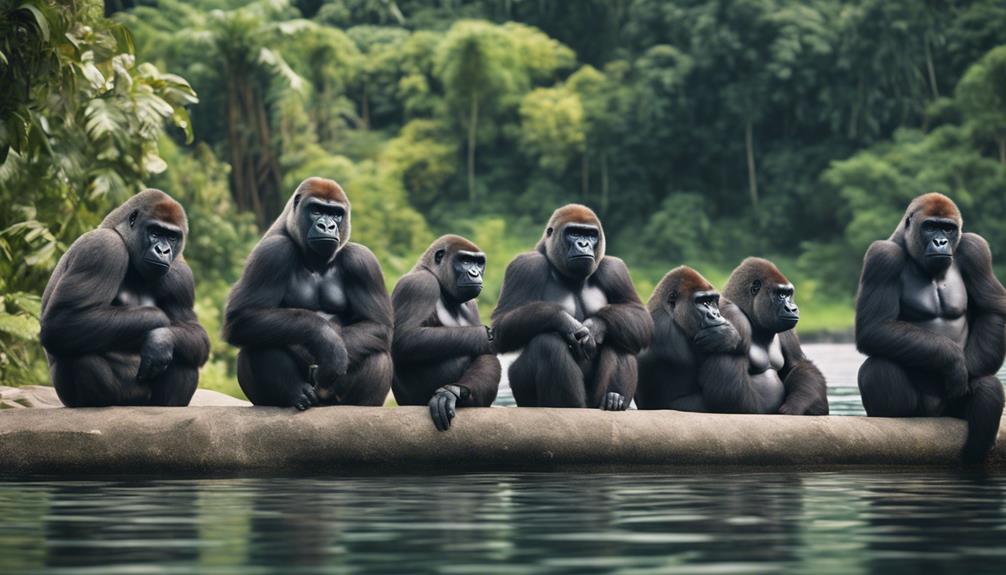
Gorillas, although naturally cautious around water, possess unique behaviors that showcase their adaptation to their environment. These intelligent primates use tools to measure water depth before crossing, displaying their careful nature when it comes to bodies of water.
Unlike other animals, gorillas absorb most of their water intake from their diet, rarely drinking directly from water sources. Their low-fat bodies and heavy bones make swimming a challenge, affecting their potential in the water. Despite their hesitance around water, gorillas have been observed wading through shallow areas when necessary, displaying their resourcefulness and intelligence in adapting to their surroundings.
This cautious behavior near water highlights their survival instincts and ability to thrive in their natural habitat. While gorillas may not be known for their swimming prowess, their unique behaviors and adaptations make them fascinating creatures to observe in the wild.
Giraffes
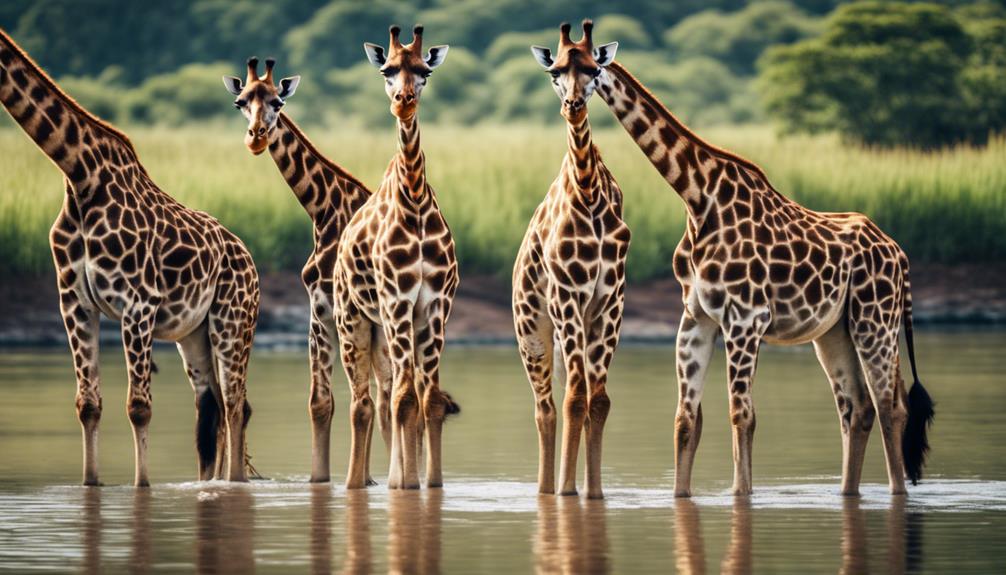
Giraffes, unlike their cautious counterparts, exhibit a unique adaptation to their environment through their towering stature and specialized feeding habits. As the largest terrestrial animals, giraffes have bulky legs that prevent them from swimming effectively. While they may not be commonly seen near rivers or lakes, giraffes hydrate through their diet and would likely float due to their body structure if they were to enter the water.
These majestic creatures prefer to stay away from water bodies as they can fulfill their hydration needs through the leaves and buds they consume. Their long necks and legs are better suited for browsing on tall trees rather than wading through deep waters. Giraffes’ avoidance of swimming is a manifestation of their evolutionary specialization for life on land, where their unique anatomy and behaviors have allowed them to thrive in their natural habitat.

Erzsebet Frey (Eli Frey) is an ecologist and online entrepreneur with a Master of Science in Ecology from the University of Belgrade. Originally from Serbia, she has lived in Sri Lanka since 2017. Eli has worked internationally in countries like Oman, Brazil, Germany, and Sri Lanka. In 2018, she expanded into SEO and blogging, completing courses from UC Davis and Edinburgh. Eli has founded multiple websites focused on biology, ecology, environmental science, sustainable and simple living, and outdoor activities. She enjoys creating nature and simple living videos on YouTube and participates in speleology, diving, and hiking.
🌿 Explore the Wild Side!
Discover eBooks, guides, templates and stylish wildlife-themed T-shirts, notebooks, scrunchies, bandanas, and tote bags. Perfect for nature lovers and wildlife enthusiasts!
Visit My Shop →
